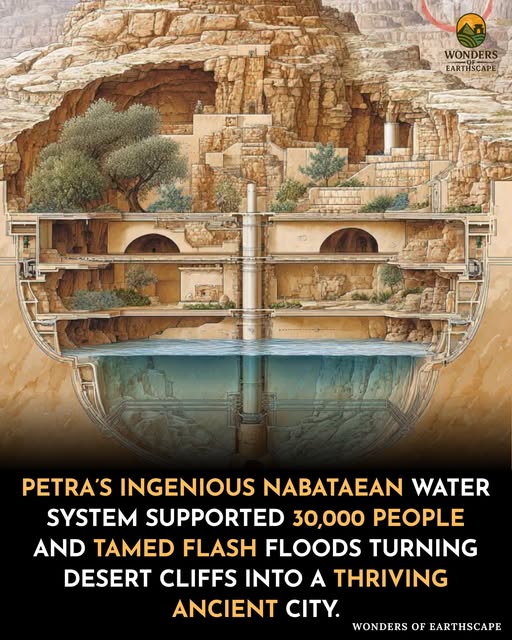
Hidden deep within Jordan’s rose-hued sandstone canyons, the ancient city of Petra stands as a breathtaking tribute to the Nabataeans a once-nomadic Arab people who, by the 4th century BCE, established one of the most advanced and thriving urban centers of the ancient world. Despite settling in an arid desert landscape, the Nabataeans transformed Petra into a flourishing hub of life, culture, and commerce. Their most astonishing achievement was their sophisticated water engineering: in a region with less than six inches of annual rainfall, they constructed an intricate system of dams, cisterns, and ceramic piping that collected, filtered, and stored rainwater. This innovation not only sustained a population of around 30,000 but also allowed for verdant gardens and agricultural productivity amidst the harsh desert.
The architectural legacy of Petra is equally remarkable. Its iconic structures, such as the Treasury (Al-Khazneh), are carved directly into massive sandstone cliffs, showcasing both artistic mastery and monumental ambition. These façades are only the surface of larger complexes that extend deep into the rock, some aligned precisely with celestial events like solstices and equinoxes evidence of the Nabataeans’ advanced astronomical knowledge. The city’s strategic layout, aesthetic precision, and spiritual symbolism highlight a culture that merged science, religion, and artistry in seamless harmony.
Petra’s success also stemmed from its strategic location along vital trade routes that connected Arabia, Egypt, and the Mediterranean. The Nabataeans capitalized on this by dominating the lucrative incense and spice trade. Rather than expanding through conquest, they secured their influence through diplomacy, paying tribute to empires like Rome while retaining sovereignty. Though Petra was eventually annexed by Rome in 106 CE, it remained prosperous until seismic shifts both literal and economic led to its decline. Forgotten by much of the world for centuries, Petra was rediscovered in 1812 by Swiss explorer Johann Ludwig Burckhardt, reviving global interest in the ingenious civilization that once made a desert bloom.
